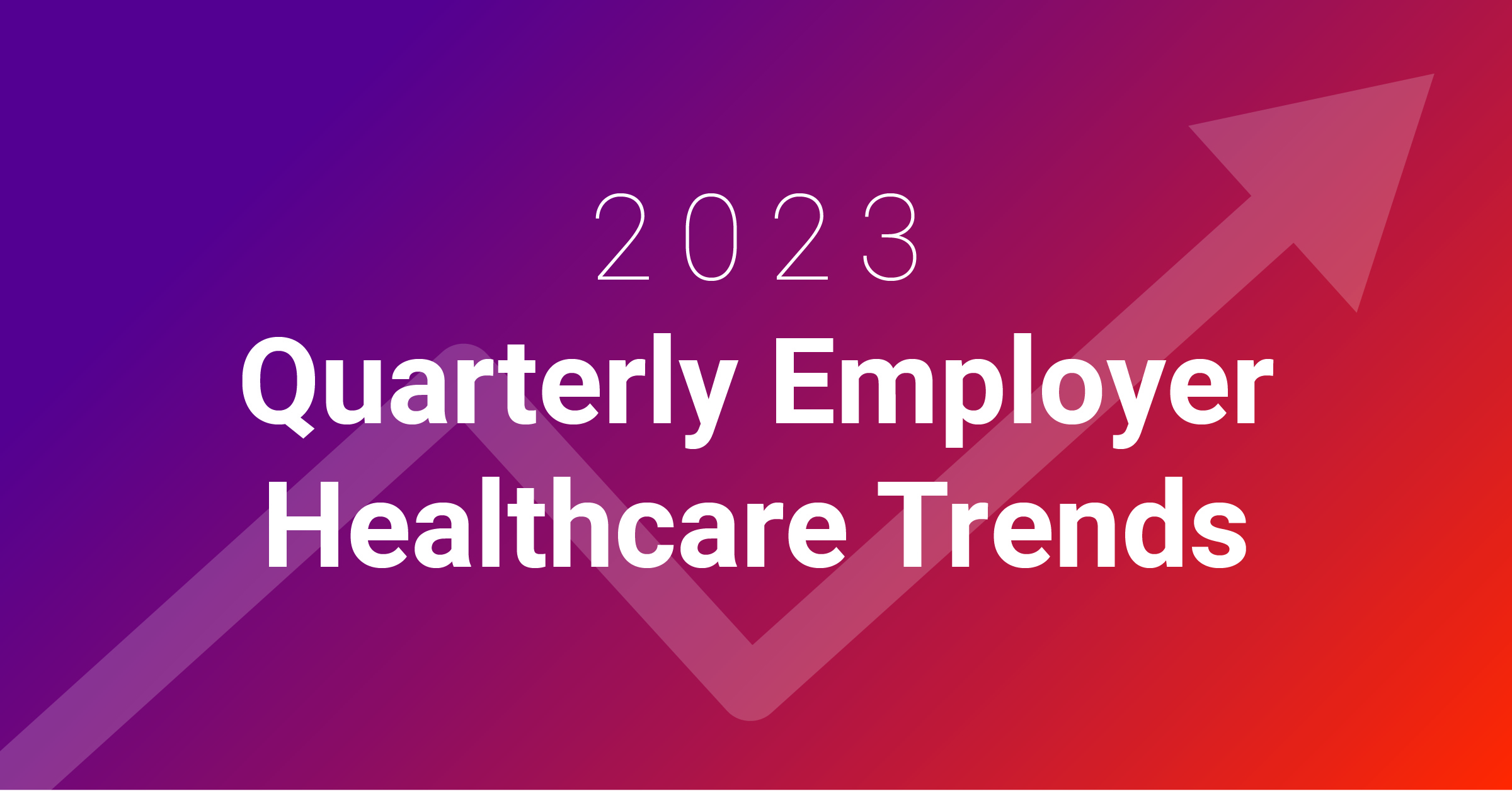As we round out the year, many will make wellness resolutions for 2024. Whether those resolutions center around losing weight, reducing stress or just getting healthier, the fourth quarter’s workforce wellness trends endorse a holistic approach.
From integrated primary and behavioral healthcare to weight loss support, check out some of the top workforce healthcare trends for Q4 2023.
Combining Behavioral Health and Primary Care Drives ROI for Employers
A Mercer Marsh Benefits report shows 16% of insurers report not providing plans that cover mental health services (versus 26% in 2022). And while the care gap continues to decrease, employers still seek ways to fill that gap.
Options an HR decision-maker might consider include adding behavioral health services through their primary care provider if available, contracting separately with a point solution or offering access to community resources through their plan design.
“It doesn’t have to be all or nothing,” says Erin Thase, Ph.D., licensed psychologist & Marathon Health National Director of Behavioral Health. “They might take a multi-faceted approach to best meet people where they are. But the power of combining behavioral health with primary care for a total population health management approach is where employers find value and a return on investment.”
Offering behavioral health services at work benefits employees, in addition to driving healthcare cost savings of 30% per member per year for those who engage with the service, according to Marathon Health data. And savings increase for members who utilize both primary and behavioral care services, resulting in 45% savings per member per year.
“Mental health is not only just as important as your physical health, but they’re also closely linked,” says Marathon Health Senior Product Manager Elizabeth O’Neill. “So the ability for primary care and behavioral health providers to collaborate together on an integrated approach to care leads to better health outcomes overall, both physically and mentally.”
Additional advantages of combining behavioral health services with an existing employer-sponsored primary care solution include streamlined care access and increased engagement.
“If an employer offers behavioral health through an existing benefit with their primary care health center, the level of familiarity and trust makes it more likely patients will engage in an area where there’s often stigma,” O’Neill says.
Employer Weight-Loss Support Necessary as GLP-1 Requests Rise
GLP-1 drugs, like Ozempic or Wegovy, continue to make headlines for their effectiveness in helping people lose weight. Health professionals wrote 500K+ new prescriptions for GLP-1s to treat diabetes and obesity in February 2023, an increase of 152% since the previous year.
But GLP-1s come with a hefty price tag. GoodRx shows a one-month supply of Ozempic costs around $1,000. And many pharmacy benefit managers deny coverage. “Some of the PBMs are offering utilization management, prior approval processes and programming to make sure these medications are only being used for patients with diabetes, or under strict parameters,” says Brian Johnson, MD and Regional Vice President of Clinical Leadership at Marathon Health.
Not to mention, a quick fix is rarely a permanent solution. “As Americans, we like the quick fix,” says Lauren Hutchens, National Director of Health Coaching for Marathon Health. “But what happens in the long-term? We don’t know a lot about the long-term impact of these medications, but we do know behavior and lifestyle makes a difference.”
Obesity is an illness with multiple input factors, such as genetics, lifestyle, sleep hygiene and prescription drug side effects. A holistic approach that includes primary care, health coaching, behavioral health services, support programs and chronic condition programming better supports patients in their weight-loss journeys.
“GLP-1 therapies carry a high lifetime expense to employees while not really addressing the root causes of obesity,” says Eric Neuville, Marathon Health VP of Market Development. “Volume-based, fee-for-service primary health care systems seem to have very little clinical approach other than prescribing GLP-1s at a patient’s request.”
Healthcare Trends include a Focus on Total Health and Wellness Initiatives
Noticing a theme with the employer healthcare trends? Mental health, physical health, wellness — they are all connected. And HR leaders will continue to focus on total health and wellness initiatives in 2024. That’s because benefit managers see the ROI in increased employee satisfaction, as well as reduced recruitment costs and absenteeism.
“Working in an effective team helps optimize our ability to meet our patients’ and our clients’ needs and empower patients to achieve their health goals,” says Natasha Parekh, MD and Regional VP of Clinical Leadership at Marathon Health. “I’ve seen diabetics and uncontrolled hypertensive patients meet their chronic disease goals quickly, effectively and sustainably because we’ve had several people on our team, whether it be health coaches, behavioral health specialists, nurses, etc., engage in their care.”
A multimodal approach also removes healthcare barriers. For example, virtual care may work better for some people’s schedule or comfort level. And patients may be more willing to open up to their health coach than a behavioral specialist or primary care practitioner. A walking challenge offered through work or a lunch and learn on healthy eating could be what finally engages a person in their wellness journey.
“Our clinicians all work within the same EMR,” O’Neill says. “And, culturally, we practice medicine similarly with that population health management mindset and really drive the best outcome for the patient. Studies show having that continuity of care results in better clinical outcomes.”
You might also like
Subscribe to our newsletter and stay on the cutting edge of worksite healthcare.










